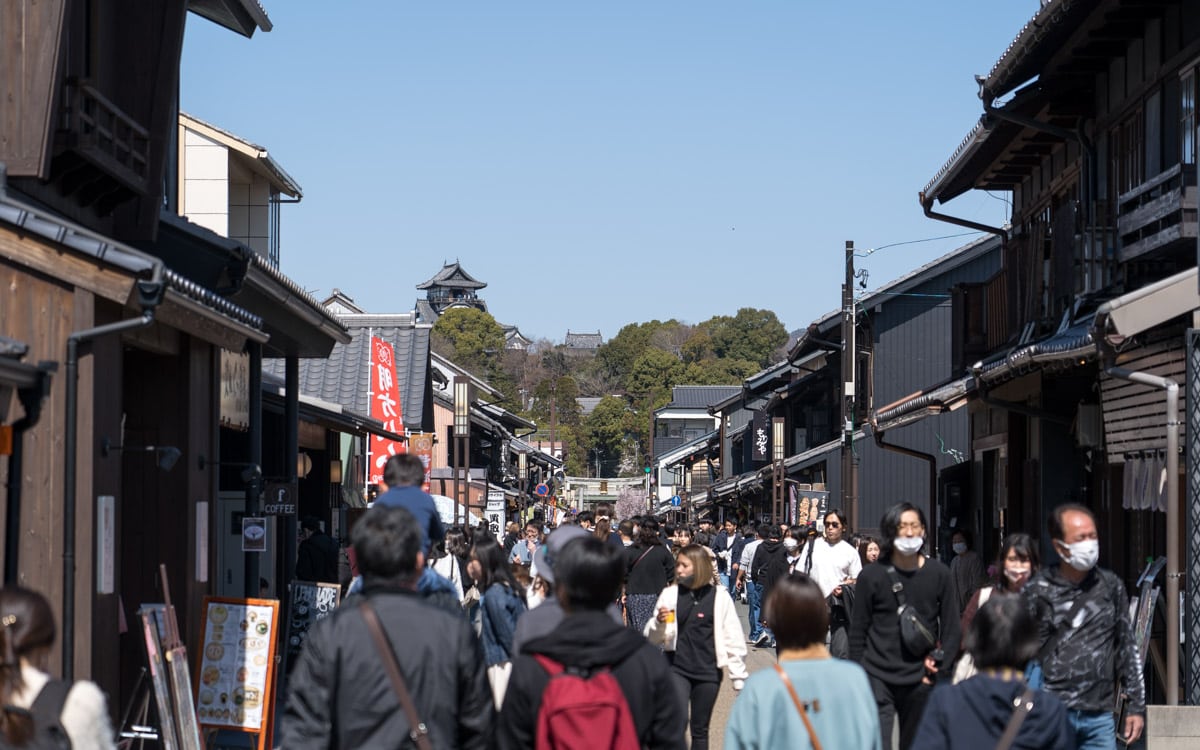
If you are looking for a day trip from Nagoya, Inuyama in the Aichi Prefecture is a great choice, located about 30 minutes north by train. The small city, home to about 70,000 people, has many notable sights, including temples, shrines, gardens, and a castle.
Inuyama, which means “dog mountain,” is located on the bank of the Kiso River. The city is relatively compact, with its shrines, temples, and castles all within walking distance of each other and the train station.
The main reason for visiting is Inuyama Castle. The castle is a National Treasure and one of Japan’s original twelve castles. For almost 500 years, the castle has avoided destruction by earthquakes, fire, and war.
In addition to its castle, Inuyama is known for Urakuen, a 17th-century garden, Inuyama-jokamachi, its historical castle town, and Daishoji Temple, a peaceful temple with great city views.
Whether you have a full day or only a few hours, Inuyama is a worthwhile trip from Nagoya. Here is my guide for taking a day trip to Inuyama.
Table of Contents
How to get to Inuyama
By Meitetsu
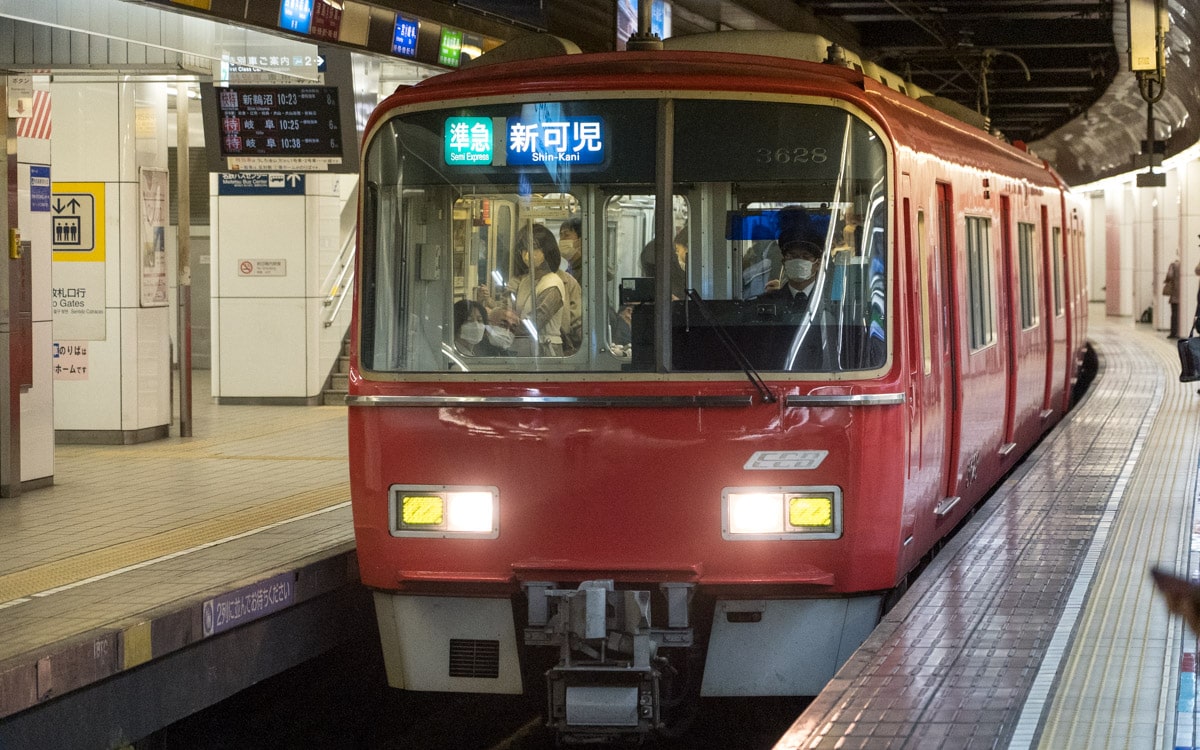
The easiest and fastest way to travel from Nagoya to Inuyama is the Meitetsu Inuyama Line. Direct trains to Inuyama depart multiple times per hour from Meitetsu Nagoya Station, next to JR Nagoya Station.
Most Limited Express trains take about 26 minutes and cost 630 yen. Certain Limited Express trains have reserved seating and cost 1080 yen. Alternatively, Semi-Express trains take about 30-35 minutes and cost 630 yen. A Japan Rail Pass covers neither journey.
By Japan Railways (JR)
The nearest JR station to Inuyama is Unuma Station, about one-mile northeast of Inuyama Castle.
To reach Unuma Station, you’ll need to make one transfer. First, take the Tokaido Line to Gifu Station from Nagoya Station. Next, transfer to the Takayama Line to Unuma Station. The journey takes about 50-60 minutes and costs 860 yen. A Japan Rail Pass covers this journey.
Once at Unuma Station, you have a few options. First, you can walk to the castle in about 30 minutes. Otherwise, you can transfer to the Meitetsu Inuyama Line at the nearby Shin-Unuma Station.
From Shin-Unuma Station, you can reach Inuyama Station in 3-4 minutes, costing 180 yen. A Japan Rail Pass does not cover this segment.
As this option requires multiple transfers, I do not recommend traveling to Inuyama by Japan Railways.
Arrival at Inuyama
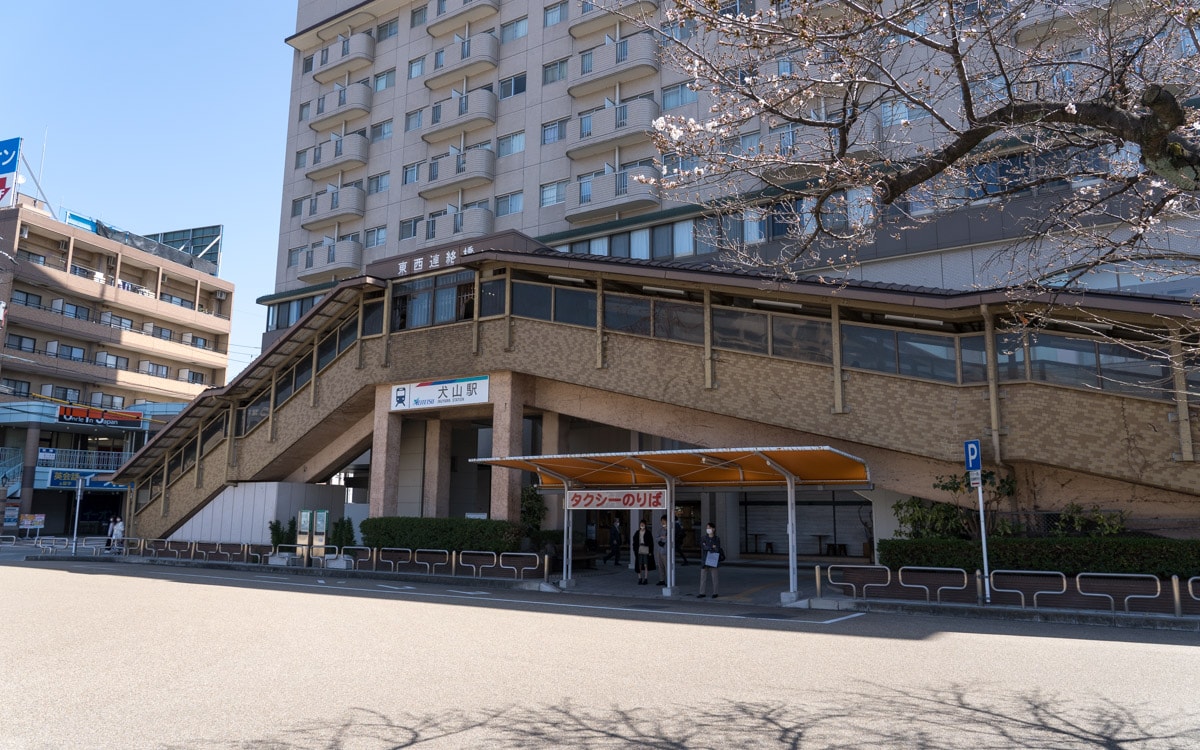
Welcome to Inuyama Station, a railway station operated by Meitetsu. You will arrive here if you take the Meitetsu Inuyama Line from Meitetsu Nagoya Station.
Although small, this station has everything you need. The station has a tourist information office, coin lockers, restaurants, fast food, ATMs, buses, taxis, and bicycle rentals.
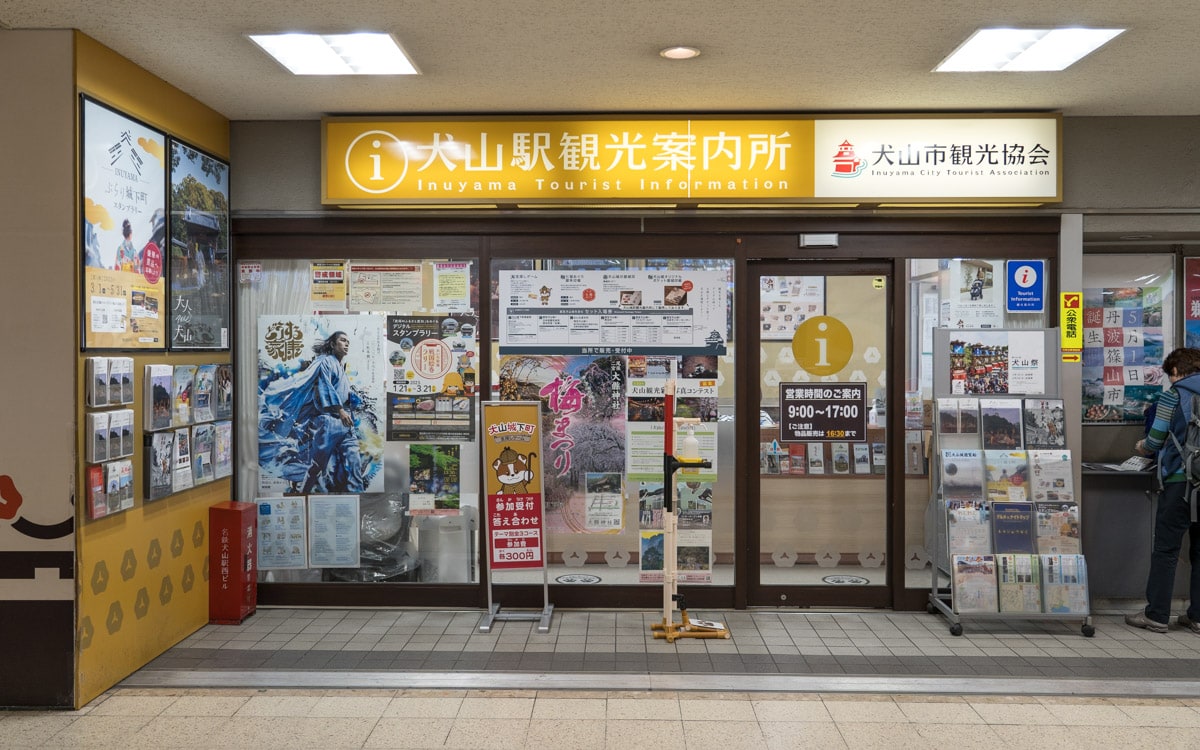
Those who need help planning their trip will find the Inuyama Tourist Information Center near the station’s west exit.
At the information center, you will find staff who speak multiple languages, ready to help answer questions and provide information for your visit.
They also offer area maps, public transportation details, and information about tourist sights.
How to get around Inuyama
Inuyama is a compact city that is perfect for exploring on foot. Almost all important sights are within a 20-minute walk of the station. If you plan on walking, exit from the west exit.
If you need a taxi, you can find them outside the station’s west exit. City buses depart near the east exit of the station. I don’t recommend using these buses as they are not useful for most tourists visiting central Inuyama.
Things to do in Inuyama
Inuyama Castle
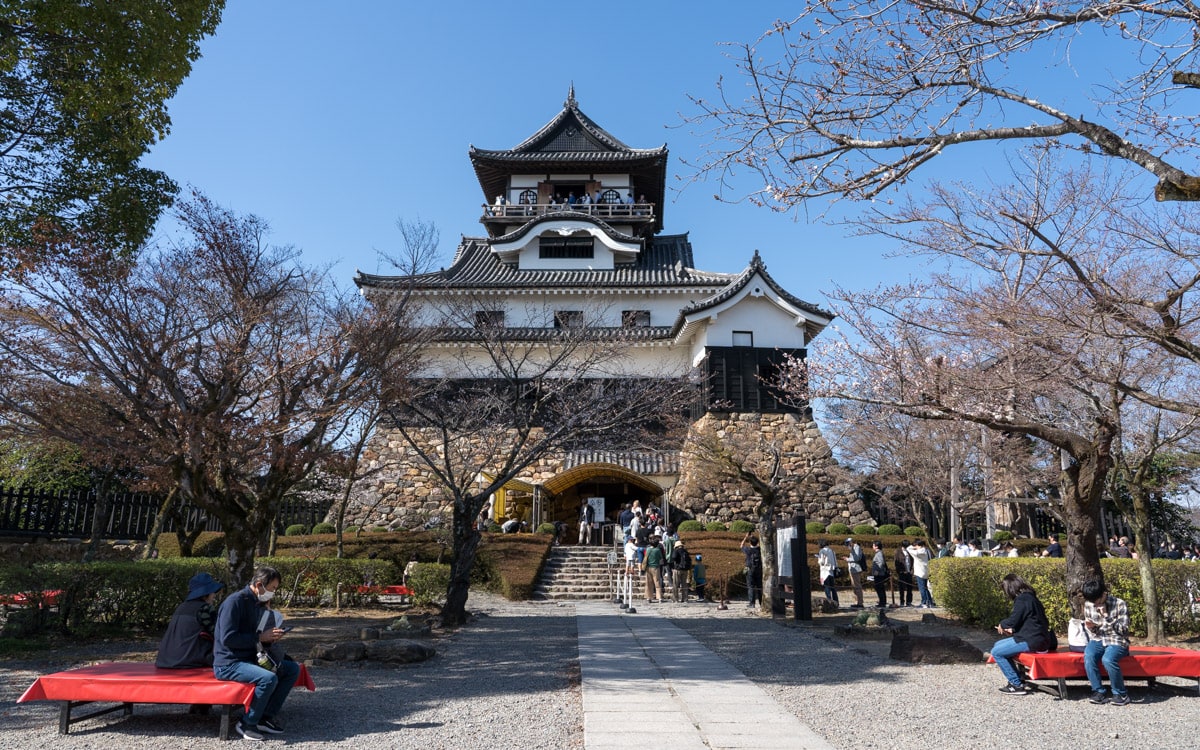
No visit to Inuyama is complete without a visit to Inuyama Castle. The castle, located on a hill on the Kiso River’s southern bank, is strategically situated between Aichi and Gifu Prefectures.
Oda Nobuyasu, the uncle of Oda Nobunaga, a powerful Japanese feudal lord (daimyō), began constructing the castle around 1537. During the Sengoku period of the 16th century, the castle was at the center of many important battles.
Due to its location, the castle changed hands many times after a battle was won or lost. In the 17th century, the Naruse clan took control of the castle and remained in control until 2004, when the Inuyama Castle Hakutei Library took control.
Inuyama Castle is one of Japan’s twelve remaining original castles. Its main keep or tower (tenshukaku) is the oldest. The castle has survived the constant threat of war, earthquakes, floods, and fires for centuries.
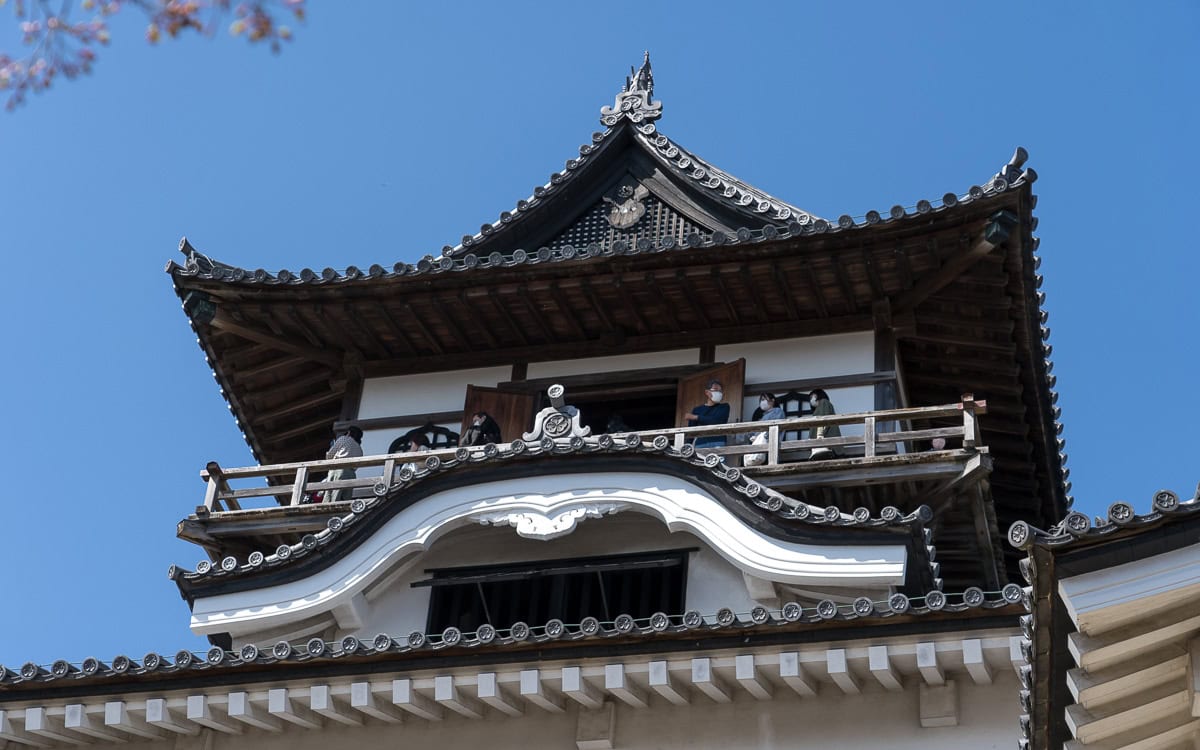
The main keep at Inuyama Castle is designated a National Treasure of Japan, along with Himeji Castle, Hikone Castle, Matsumoto Castle, and Matsue Castle. It is also designated a National Historic Site.
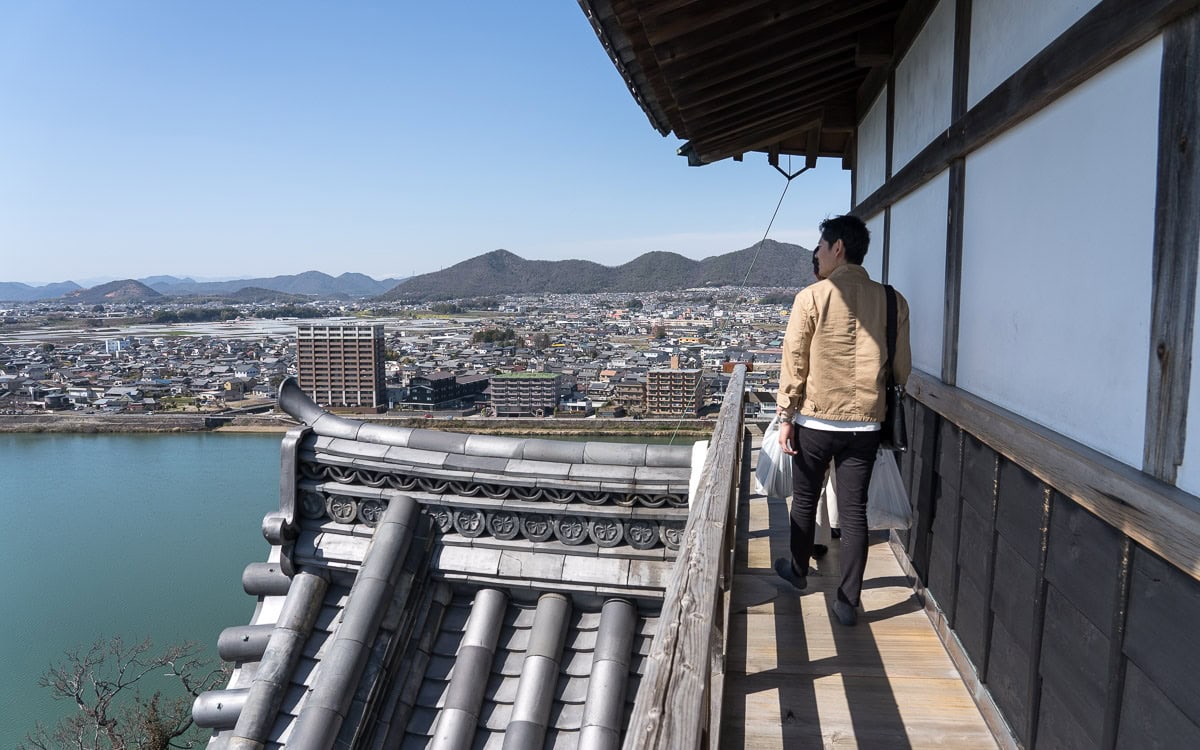
The best part of visiting Inuyama Castle is exploring the beautiful wooden interior of the main keep. Here, you will find photographs, paintings, samurai armor, and wooden models. But the best part is visiting the top floor.
Though the stairs leading up to the top floor are steep, the effort is well worth it. The views of the city, castle grounds, and the Kiso River are stunning.
Inuyama Castle is a popular spot to view cherry blossoms in spring. In the fall, many of the trees in the area turn vibrant red.
What Not to Miss
Interior of the castle keep, views from the top floor
Hours
9:00 AM – 5:00 PM (last entrance at 4:30 PM)
Entrance Fees
Adult: 550 yen
Child: 110 yen
Urakuen Garden
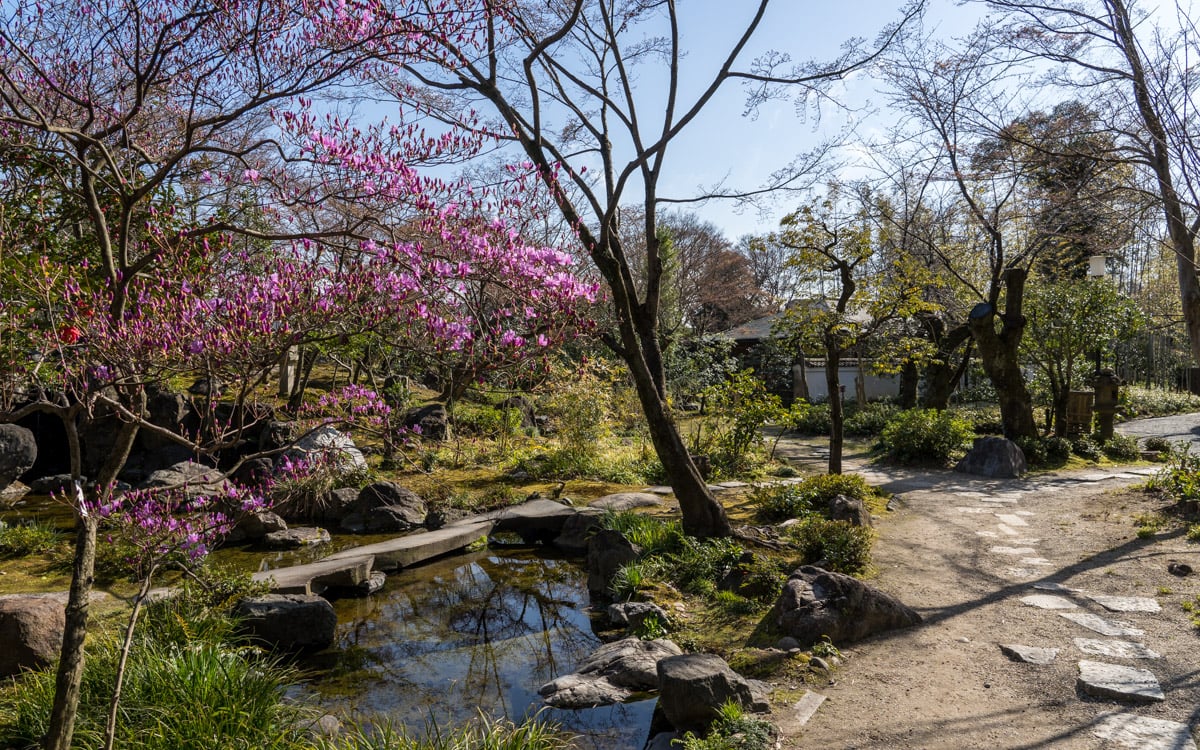
Located at the eastern base of Inuyama Castle is Urakuen Garden, a small but beautiful Japanese garden. You will find open lawns, peaceful walking paths, secluded gardens, small ponds, historic sites, tea houses, and a bamboo forest in the garden.
Construction on Urakuen Garden began in 1971 on the grounds of a former amusement park close to Inuyama Castle. Architect and architectural historian Horiguchi Sutem (1895–1984) led the project.
Horiguchi built the garden using historical records, diagrams, drawings, and accounts from the time of Oda Uraku, a tea master who lived from 1547 to 1621. Urakuen literally means Uraku’s Garden.
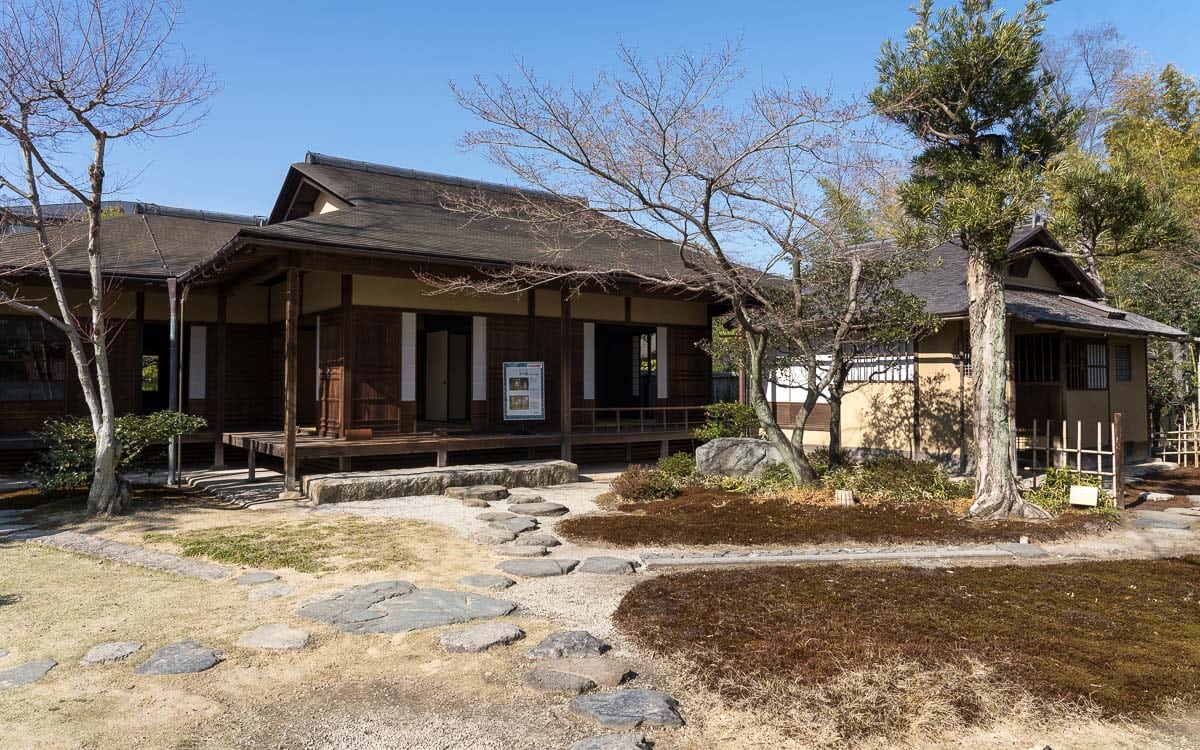
The most famous structure in the garden is Jo-an, a 17th-century tea house. In 1618, Uraku built a residence known as Shōdenin, along with an attached tea house on the grounds of Kenninji Temple in Kyoto.
Over the years, the residence and tea house changed ownership and location. In 1972, the residence and teahouse moved to its present location at Urakuen Garden. Today, Jo-an is only one of three tea houses designated a National Treasure.
In the spring, the garden is popular with visitors for its trees covered in beautiful blossoms. In autumn, it offers a display of vibrant fall colors.
What Not to Miss
Jo-an Tea House, Shōdenin Residence
Hours
Thursday – Tuesday: 9:00 AM – 5:00 PM (last admission at 4:30 PM)
Wednesday: Closed
Entrance Fees
1200 yen (garden)
1600 yen (garden and tea/snack)
1450 yen (garden and Inuyama Castle)
Honmachi-dori Street
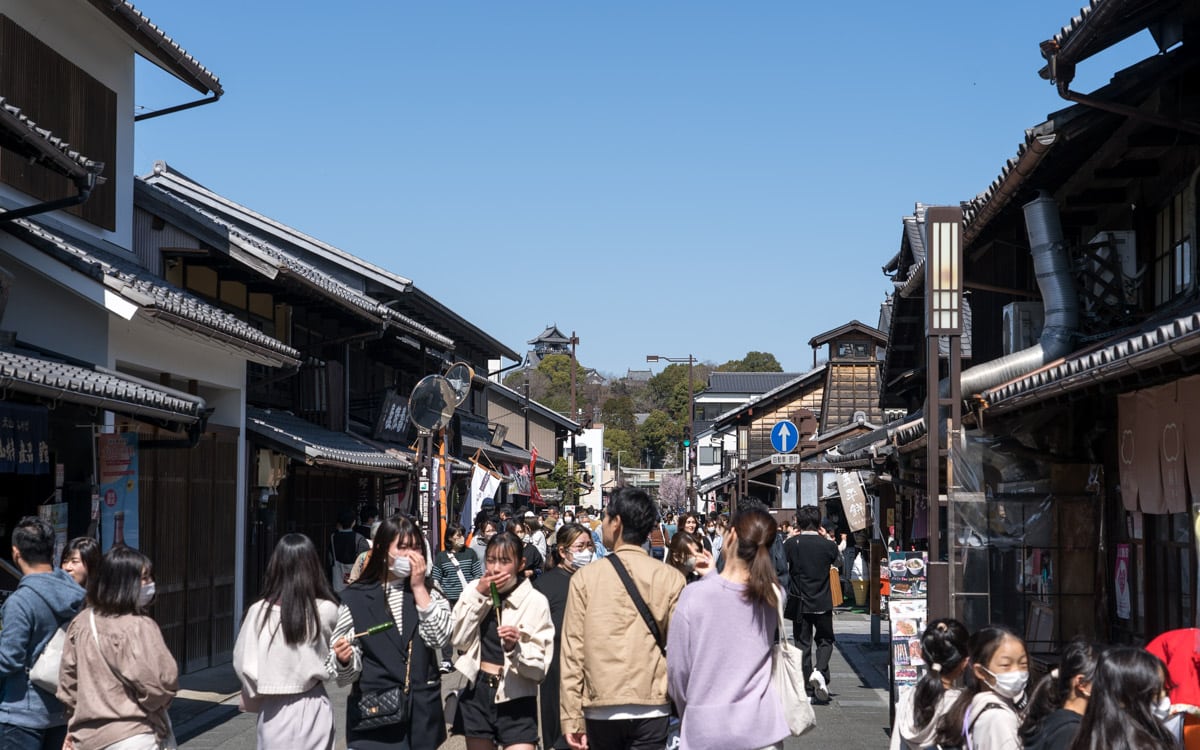
A few minutes by foot from Inuyama Station leads you to Honmachi-dori, the main street that runs through the heart of Inuyama-jokamachi, Inuyama’s Castle Town. The street also leads to Inuyama Castle.
The area that Honmachi-dori passes through consists of three sections: Upper (Kami Honmachi), Middle (Naka Honmachi), and Lower (Shimo Honmachi). In the middle section, you will find clothing shops, sake breweries, textiles shops, cafes, food stalls, and more.
Honmachi-dori has many historic sights, including a fire watchtower, Japanese-style houses, and traditional wooden buildings. Walking down the street, you will feel as if you stepped back in time to a period when samurai warriors and feudal lords fought for and ruled over Inuyama Castle.
The upper section was a busy area in the past as people passed through Castle Town. Trading posts lined the area, and boards displayed notices and announcements to citizens. Officials posted information about public security, morals, economy, money, business, and wages for everyone to see.
Honmachi-dori Street is also a great place to sample some of Inuyama’s street foods, including inuyama-yaki, a version of yakisoba, and kishimen, a flat udon noodle dish. My favorite items include local Hida beef sushi, tamagoyaki (Japanese rolled omelette), and local craft beer.
What Not to Miss
Fire Watchtower, Inuyama Loreley Beer, street food
Hours
The street is open 24 hours a day, but shop hours vary
Entrance Fees
Free
Showa Yokocho (Showa Alley)
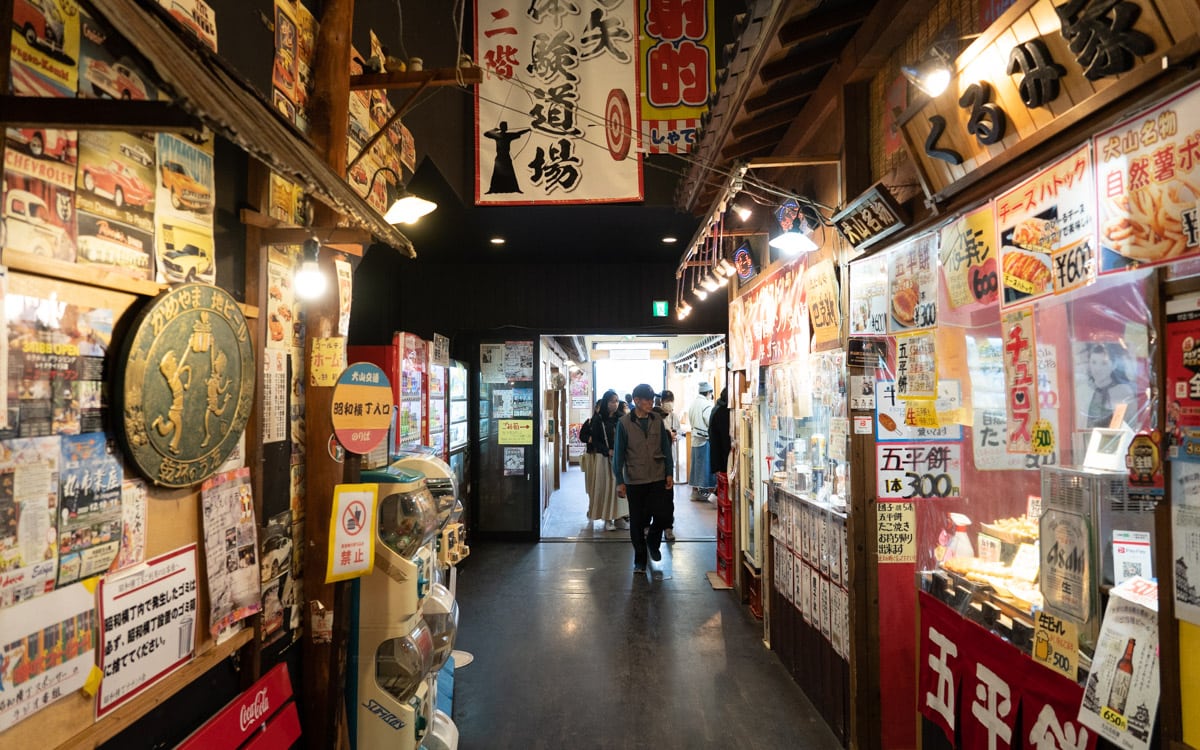
If you are walking down Honmachi-dori and looking for food, a great spot to stop is Showa Yokocho or Showa Alley. This easy-to-miss indoor alley has stalls selling traditional Japanese street foods and Inuyama specialties.
Although Showa Yokocho has a touristy feel, it’s still enjoyable to stroll down the dimly lit alley, even if you are not eating. The ambiance of the alley transports you to a bygone era, adding to the experience.
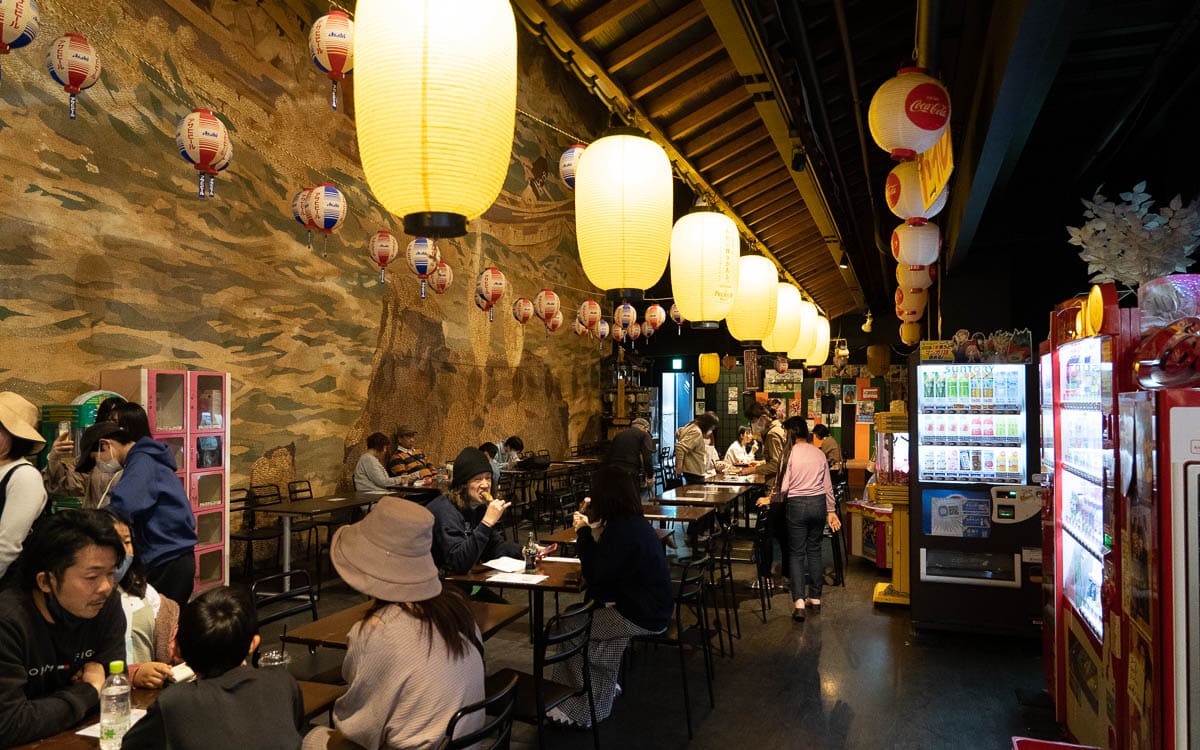
Walking down the alley, you will see stalls selling various items. You will find fried chicken, yakitori, oysters, dumplings, takoyaki, beef skewers, okonomiyaki, croquettes, tofu, ice cream, beer, sake, and more.
While some of the stalls have seating, most do not. Thankfully, there is a small but open dining room at the end of the alley.
What Not to Miss
Meat skewers, takoyaki
Hours
Generally 10:00 AM – 5:00 PM, but hours vary by individual shop
Entrance Fees
Free
Mori no Marche
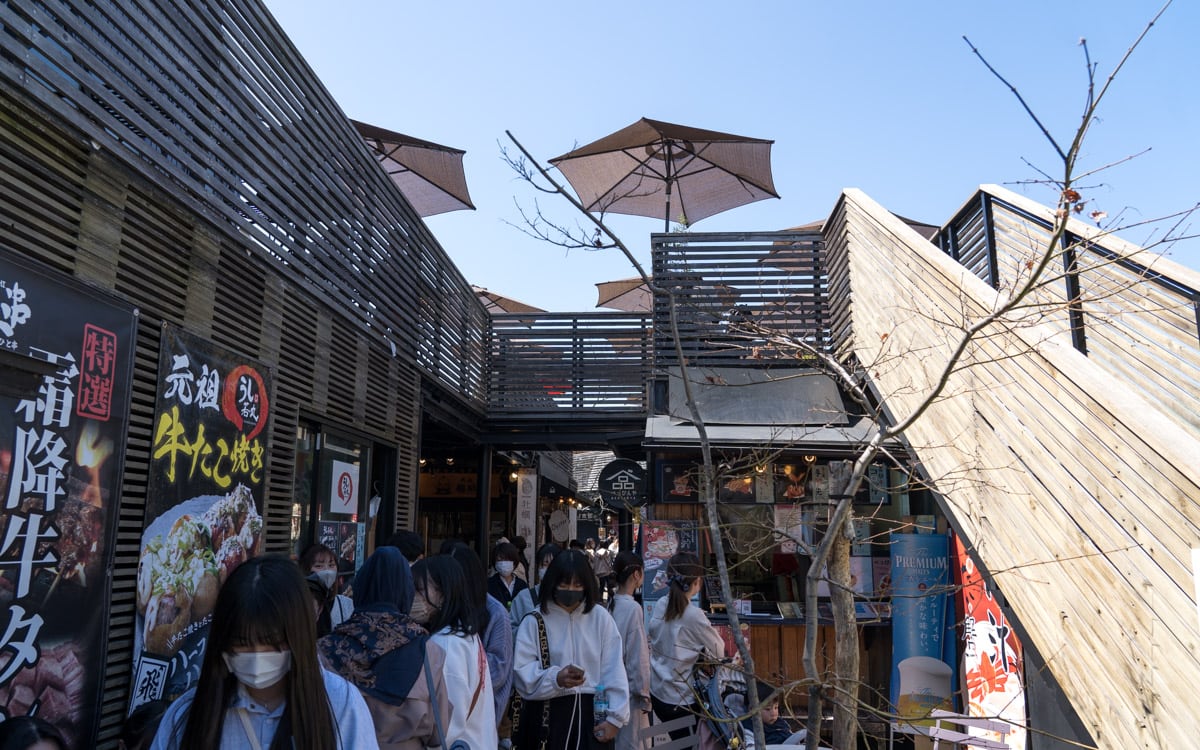
A few minutes walk from Showa Yokocho is Mori no Marche, another collection of street food stalls off Honmachi-dori. This modern and hip food stall area is open-air and features a second-floor dining area, which is wonderful on a sunny day.
At Mori no Marche, you will find a wide variety of options, including beef skewers, chicken wings, sushi, pizza, oysters, sake, and craft beer.
While I did not try any of the food during my visit, the stall selling a version of takoyaki with Hida beef had the longest line. I might have to try this stall on my next visit.
While you will find many of the same foods here as Showa Yokocho, the open-air ambiance and the second-floor dining area make it a great choice.
What Not to Miss
Dining from second-floor, oysters, Hida beef takoyaki
Hours
8:30 AM – 9:30 PM
Entrance Fees
Free
Sanko Inari Shrine
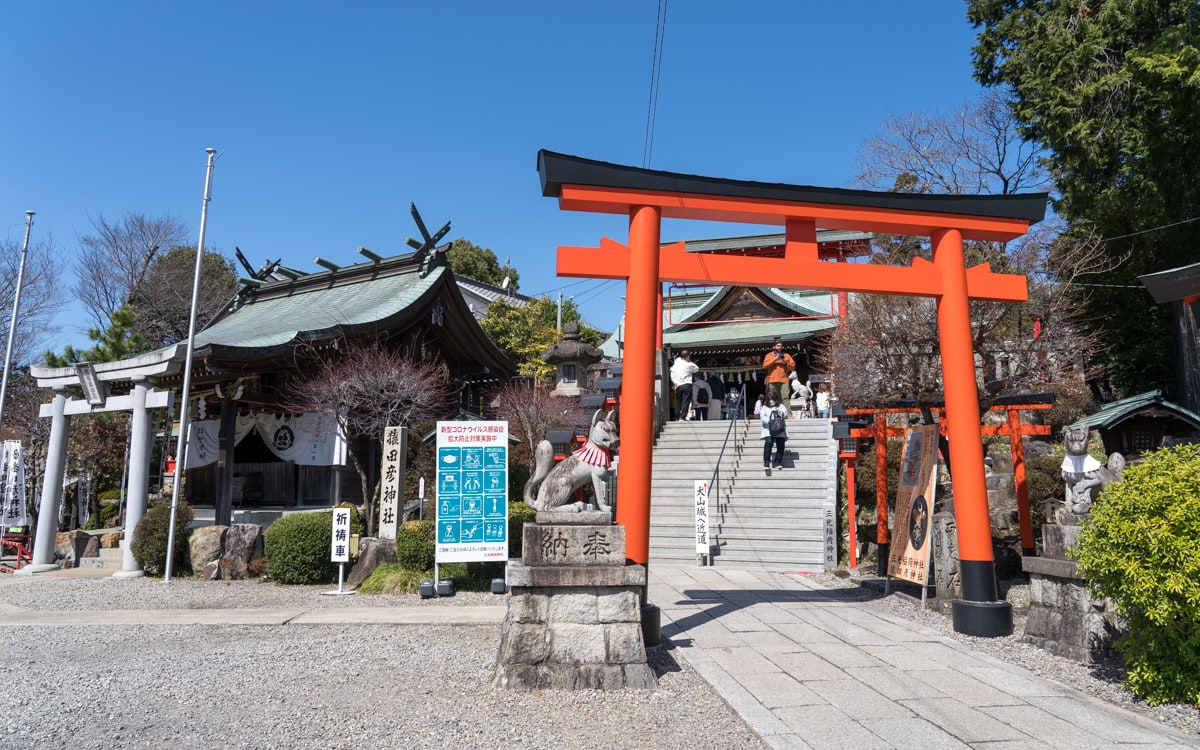
Located at the base of Shiroyama, the hill that leads to Inuyama Castle, is Sanko Inari Shrine. Located initially to the south at Marunouchi Ryokuchi Park, the shrine moved to its present location in 1964.
While the specific date is unknown, the shrine dates back to the 16th century. Oda Nobuyasu and members of the Naruse clan, who served as lords of Inuyama Castle for 400 years, often visited the shrine.
While the shrine, also known as Sankojisan, is small, it’s worth visiting on any trip to Inuyama. A highlight is the numerous red torii gates, similar to those found at Fushimi Inari Shrine in Kyoto.
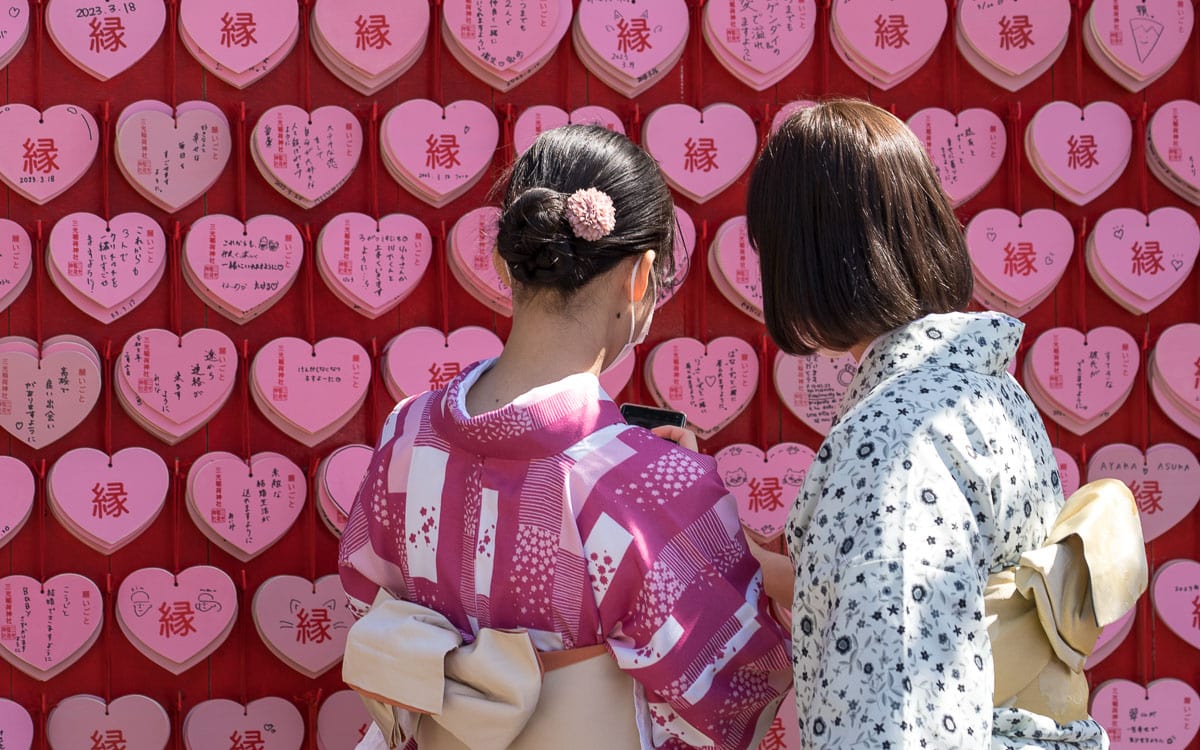
The shrine is also known for its pink, heart-shaped wooden plaques (ema) hanging around the grounds. Written on these plaques are prayers and wishes left by worshippers.
Not surprisingly, the shrine is popular for couples who come to pray here for health and happiness. Businessmen also pray for prosperity in their work.
Every year in July, a festival takes place in Inuyama. Parents and children visit the shrine after sunset during this festival, carrying lanterns from bamboo branches while Makiwara boats float down the Kiso River.
What Not to Miss
Wooden plaques (ema), red torii gates
Hours
Monday – Friday: 8:30 AM – 4:30 PM
Saturday – Sunday: 8:30 AM – 5:00 PM
Entrance Fees
Free
Haritsuna Shrine
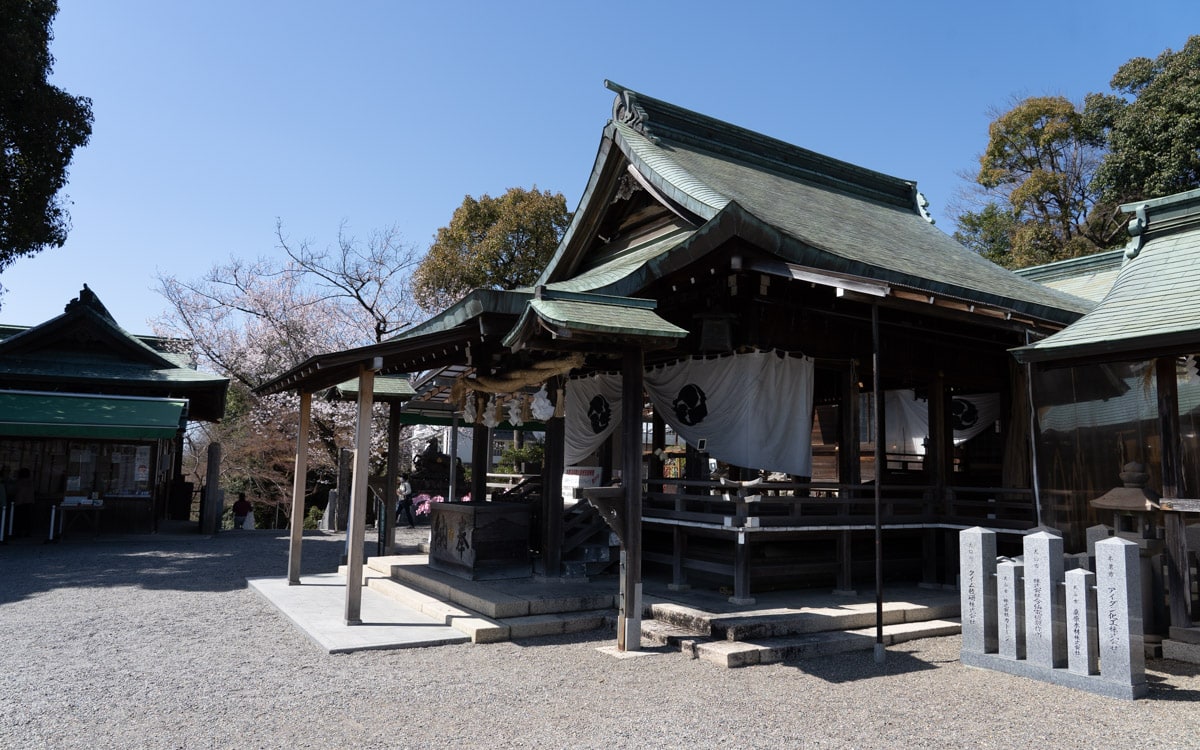
Haritsuna Shrine is a Shinto shrine located at the base of Shiroyama, adjacent to Sanko Inari Shrine. While less colorful than Sanko Inari Shrine, this shrine is still worth exploring.
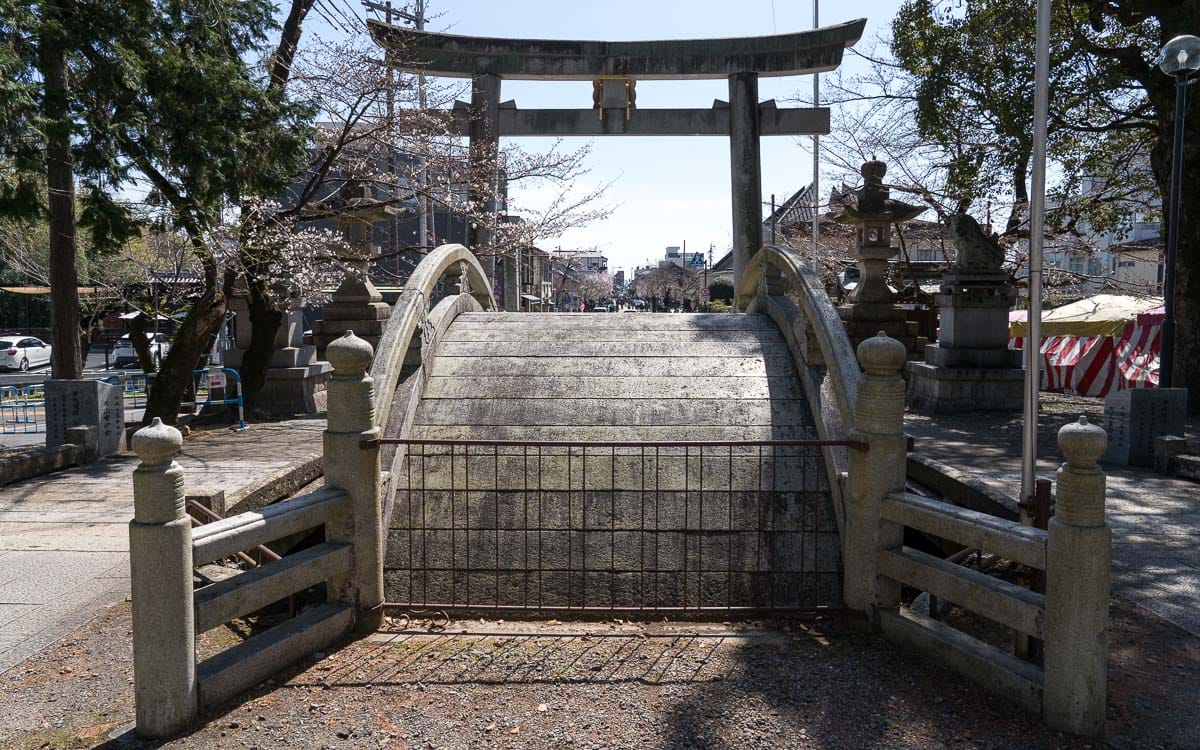
Walking through the large stone gate, you will encounter a simple but beautiful stone-arched bridge. After passing through another stone gate, you must walk up a set of stairs to reach the shrine’s main building.
Each year, during the cherry blossom season, the Inuyama Festival occurs on the shrine’s grounds on the first weekend in April. This festival dates back to 1635 at Haritsuna Shrine and features thirteen three-story floats with puppets (karakuri) on top.
Oda Nobunaga’s uncle, Oda Nobuyasu, is well known for donating a hand-carved dog statue to the shrine. He also offered prayers for safe childbirth and long life. Therefore, the shrine is popular for worshippers who pray for fertility, easy birth, and longevity.
What Not to Miss
Stone-arched bridge, horse statues, stone gates
Hours
Monday – Sunday: 9:00 AM – 5:00 PM
Entrance Fees
Free
At the shrine, you will find two statues of horses, a black and white horse. These horses, known as shinme, are sacred and considered the guardian deity of child-rearing and protection for children.
In Shinto beliefs, horses are vital as messengers between our world and the kami, the deities worshipped in Shintoism.
Daishoji Temple
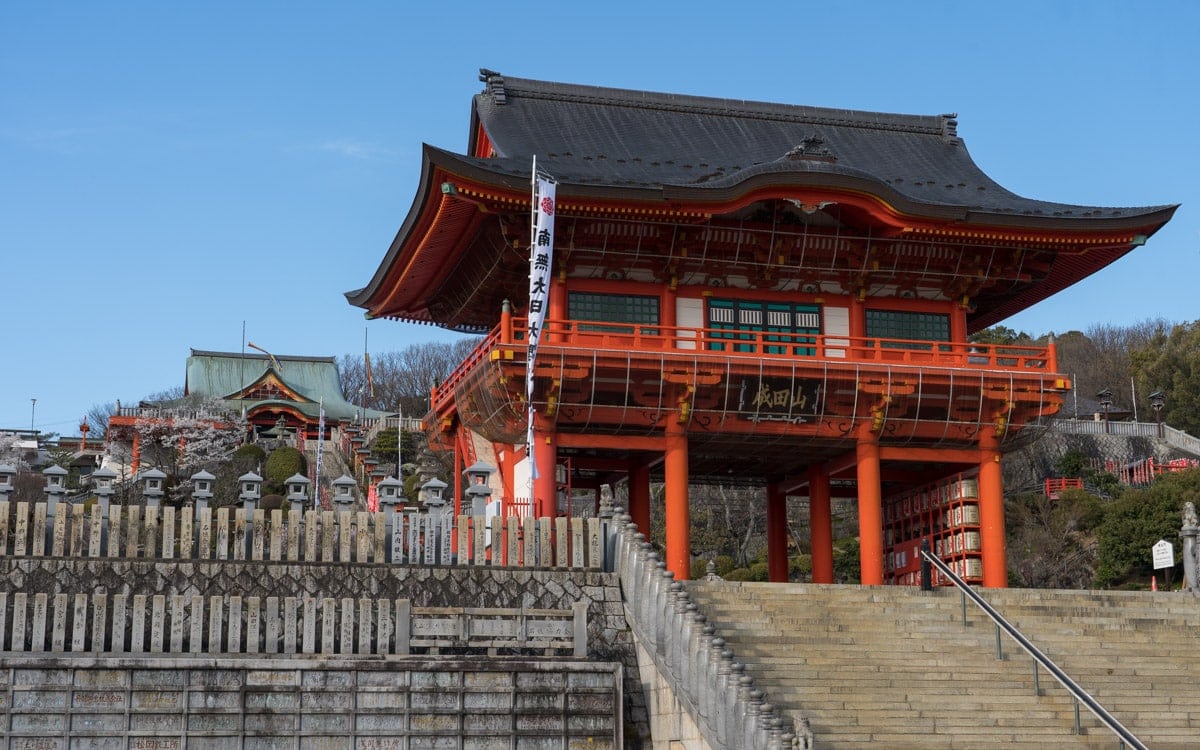
Daishoji Temple, officially known as Daihonzan Naritasan Nagoya Betsuin Daishoji, is a Shingon Buddhist temple near Inuyama-Yūen Station. The temple is the Nagoya branch of the Naritasan Shinsho-ji Temple, located near Narita International Airport.
Shingon Buddhism is a major school of Japanese Buddhism known for its rituals, mantras, and mandalas as part of its spiritual practices. Many of its teachings were introduced by monk Kukai, also known as Kobo Daishi, who founded the Shingon school in Japan during the 9th century.
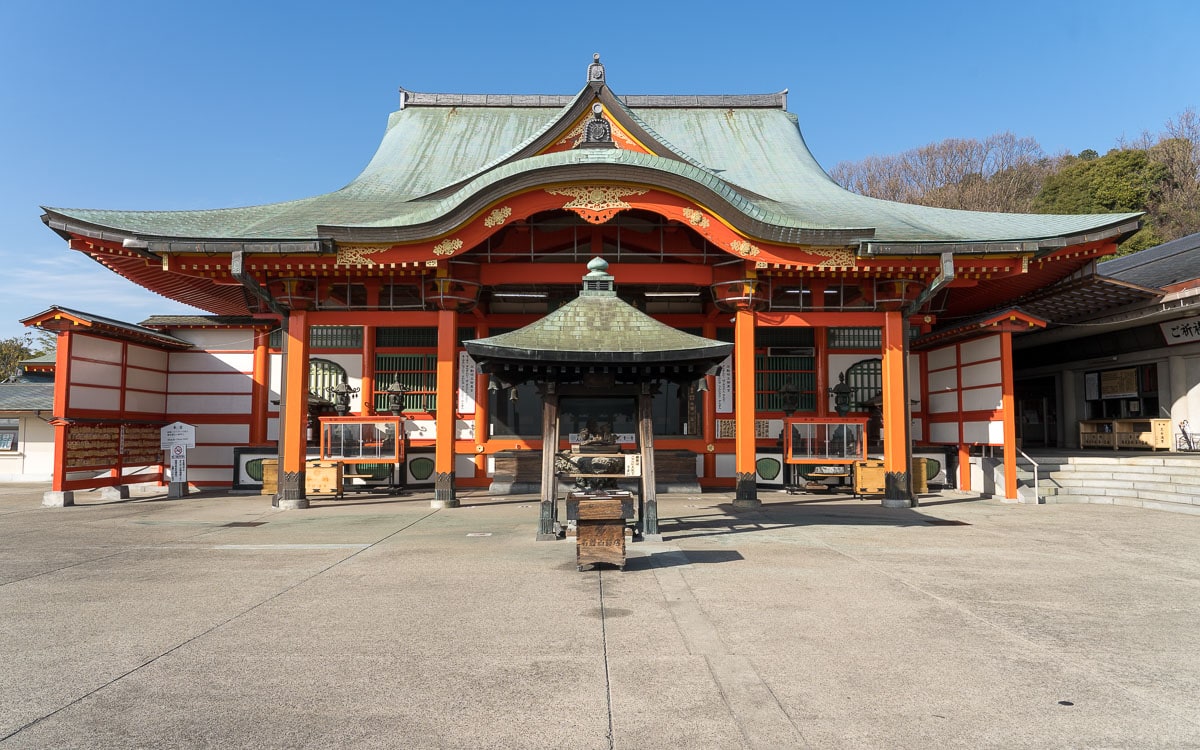
Most of the temple’s buildings date back to the 1950s. The Main Hall (Hon-do) enshrines the image of Fudo-myo-o, the temple’s principal deity.
The Bell Tower (Shoro-do) is rung every day at 6:00 AM. Hachidai-doji enshrines eight images of Fudo-myo-o’s retainers, while Godai-myo-o contains five images of the great Myo-o deities.
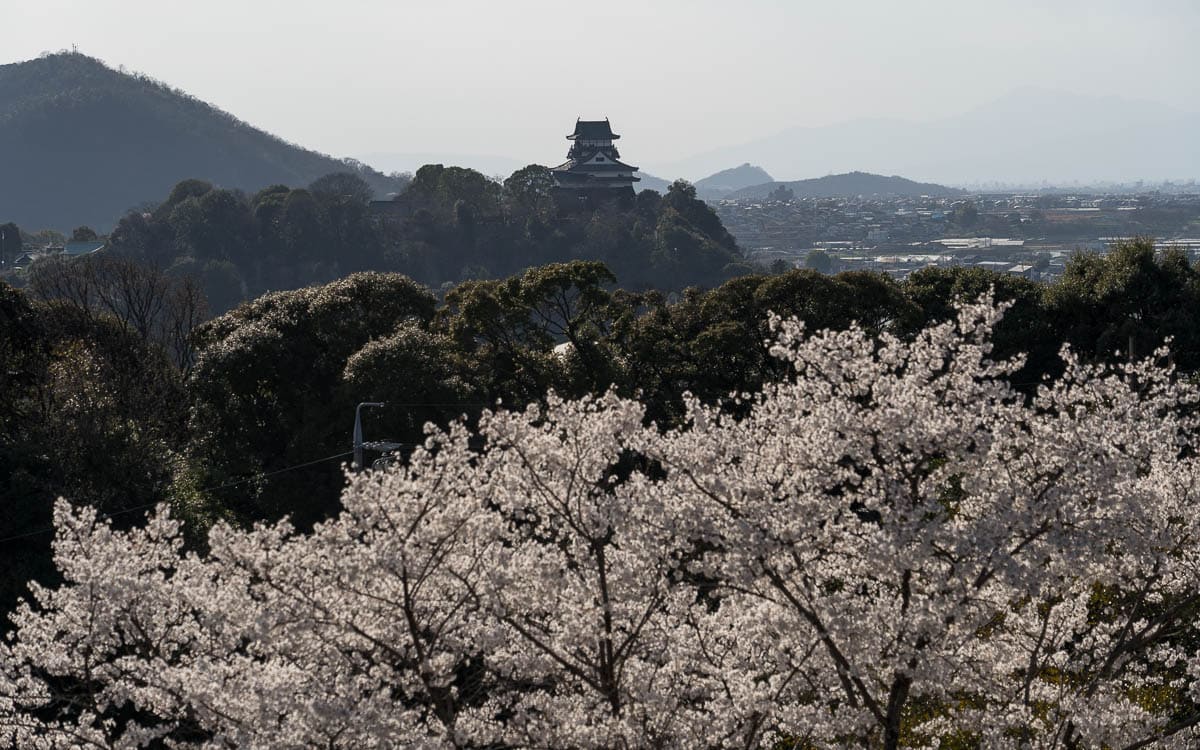
Its location at the top of a hill provides views of Inuyama Castle, Kiso River, and even Nagoya on a clear day. It is also a great place to view cherry blossoms in the spring and fall colors in autumn.
What Not to Miss
View from the top, Bell Tower (Shoro-do), Main Hall (Hon-do)
Hours
Monday – Sunday: 7:00 AM – 5:30 PM
Entrance Fees
Free
Naguri District
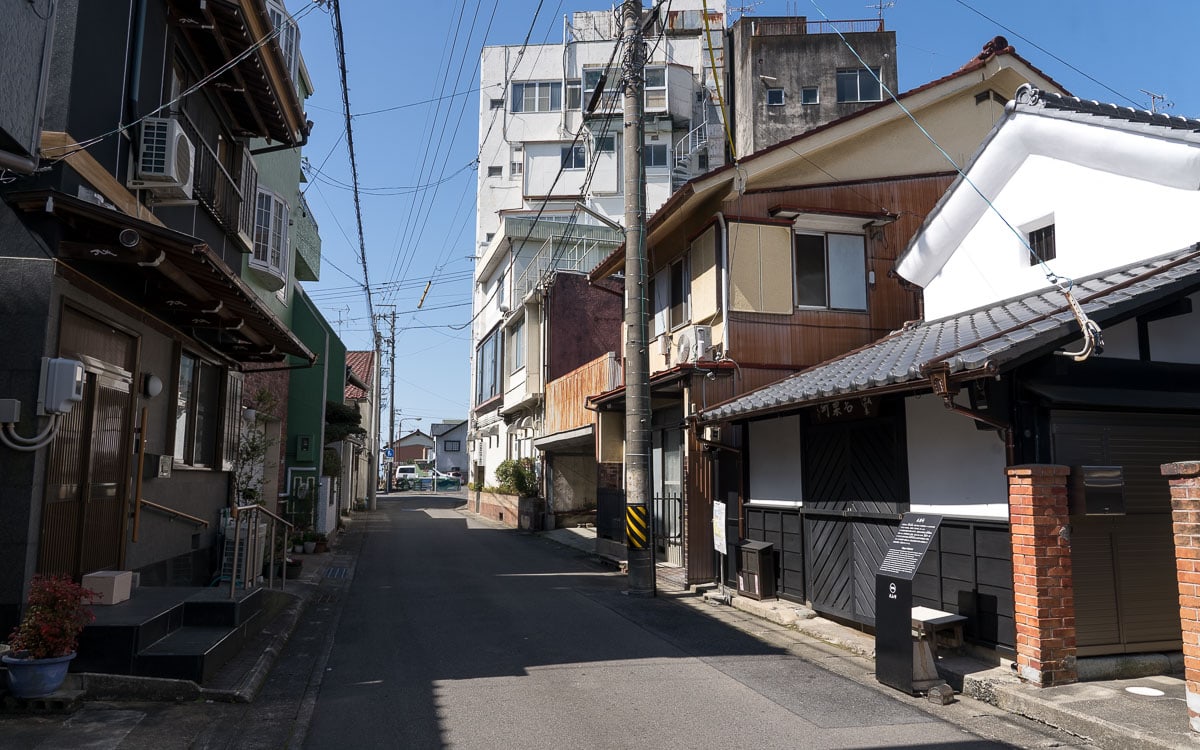
The Naguri District lies on the east-west road of Inuyama, south of Inuyama-jokamachi. The district was previously known as Tsuji no Kiri, meaning ‘tear traces,’ and Nagori before being renamed Naguri.
Naguri District was once home to the previous site of Haritsuna Shrine. Today, the shrine is near Inuyama Castle.
The quiet district is a great place to wander. It has many historical sights, private homes, shrines, and temples.
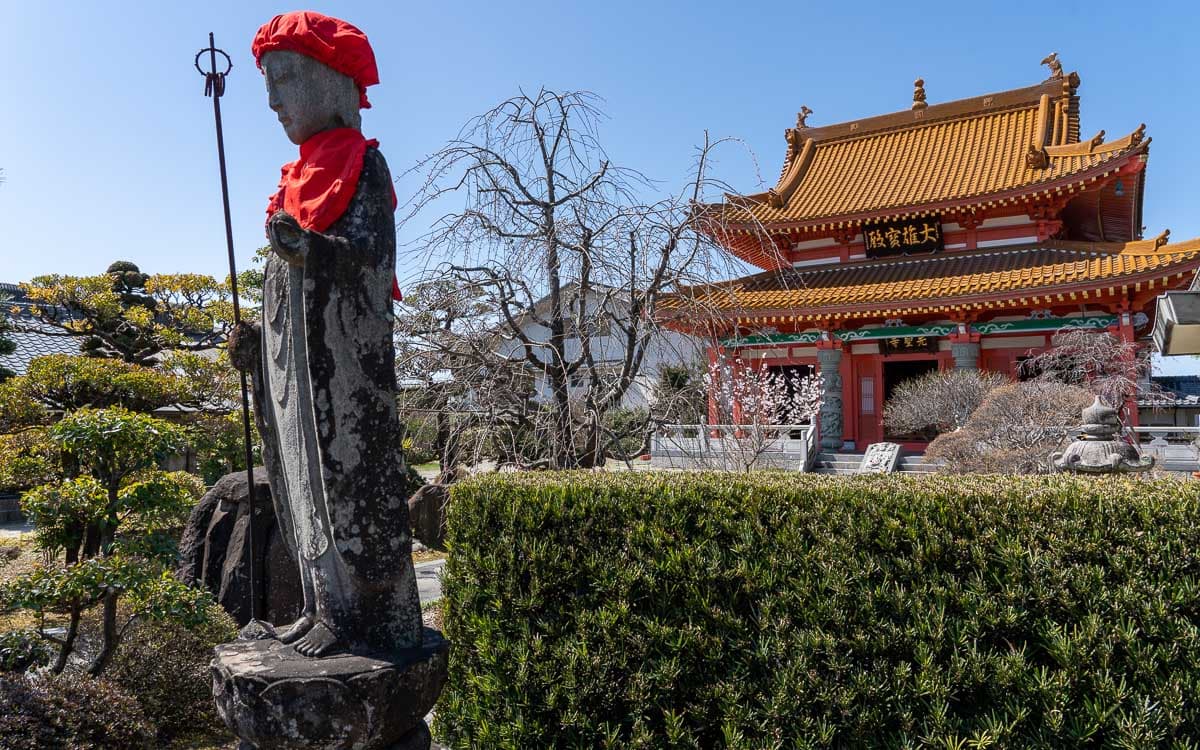
Nearby is Senshoji Temple, a Jodo Shinshu temple founded in 1575. Jodo Shinshu Buddhism, known as Shin Buddhism, is Japan’s most widely practiced branch. The temple’s main hall dates back to 1624.
The district is also home to the Former Horibe Residence. It was built in 1883 by a samurai family that served the lords of Inuyama Castle for generations. The first resident of the house, Katsushiro Horibe, also contributed to the silk industry at a time when Japan modernized.
What Not to Miss
Wandering the area, Senshoji Temple, Former Horibe Residence
Hours
The area is open 24 hours, but individual sight hours many vary
Entrance Fees
Free, but individual sight prices may vary
Last Updated on November 16, 2024
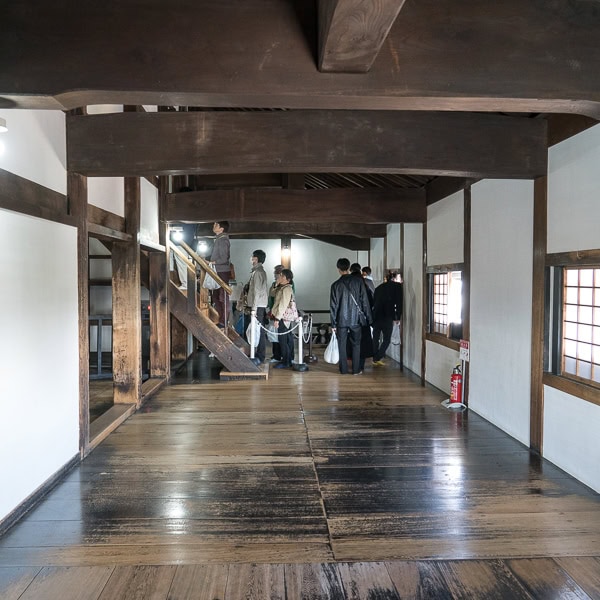
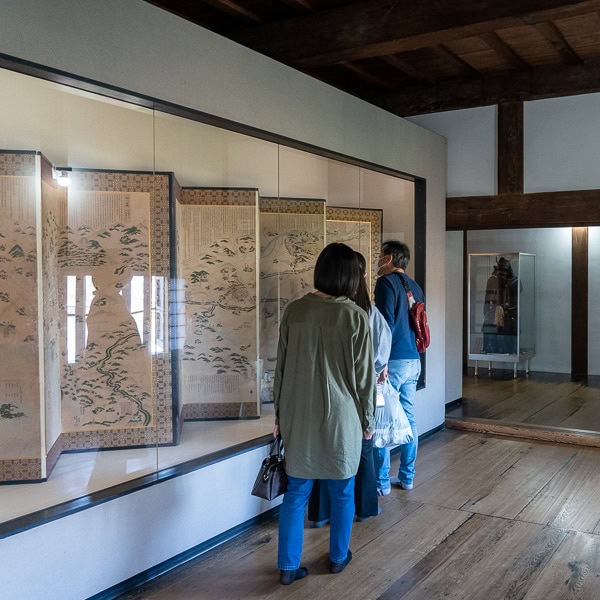
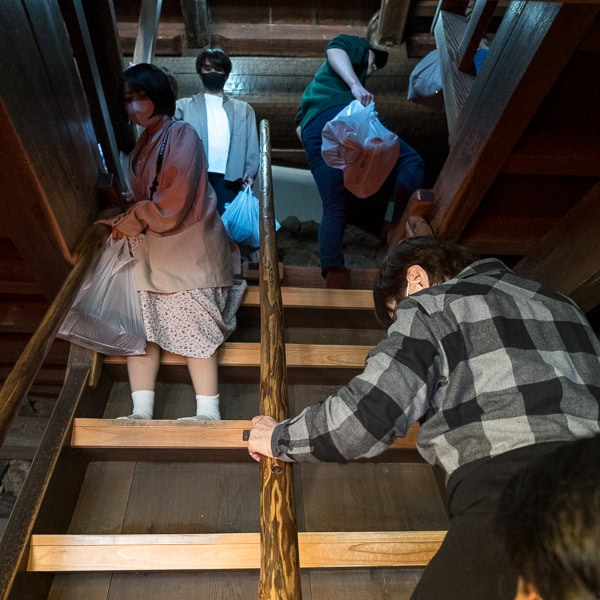
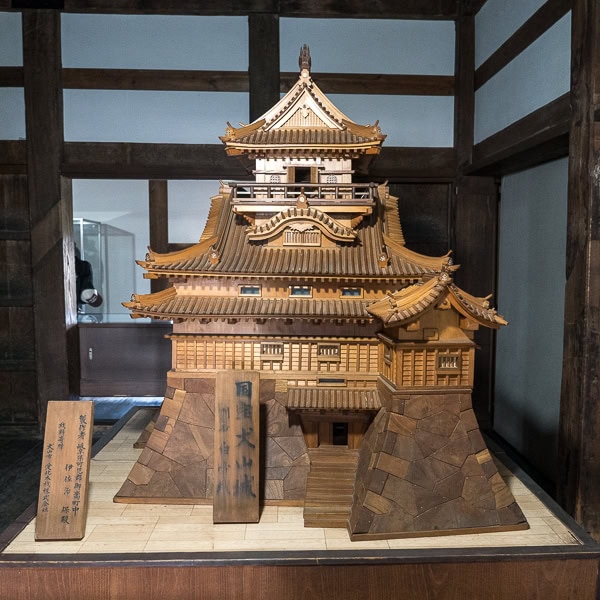
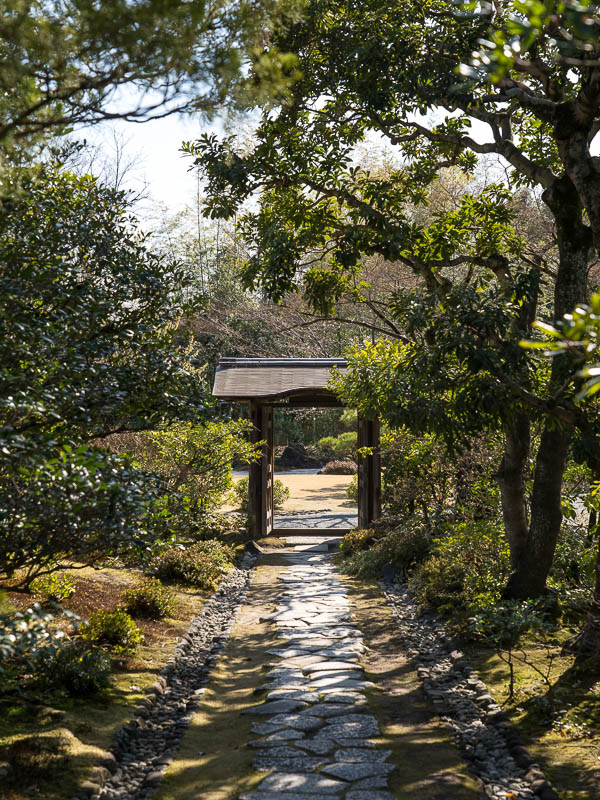
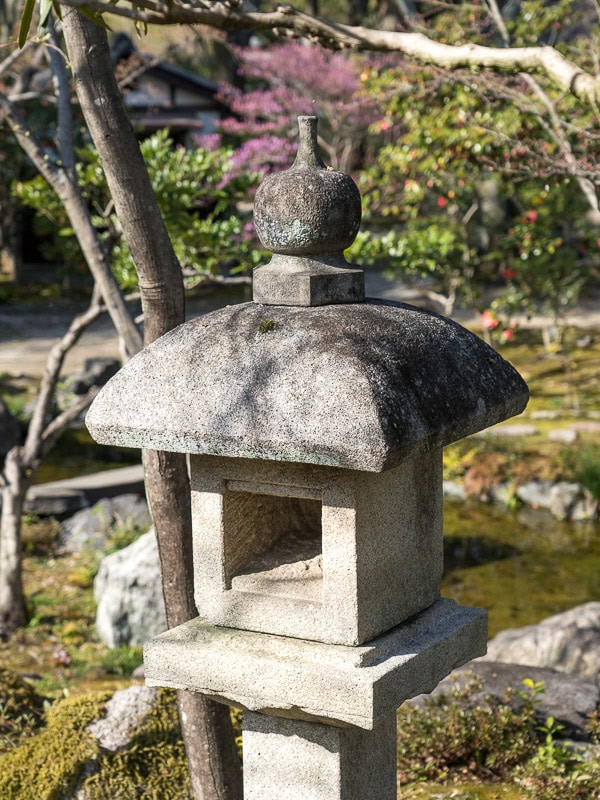
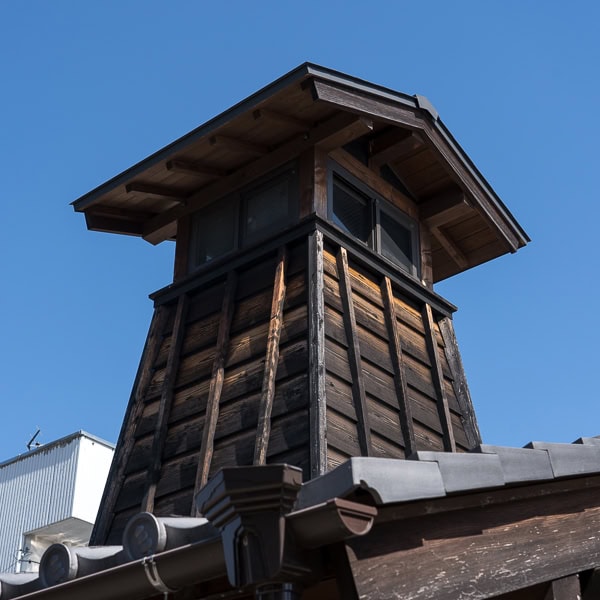
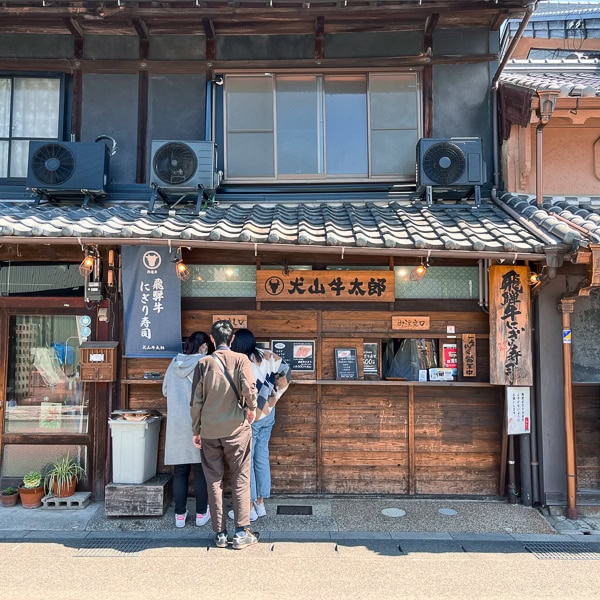
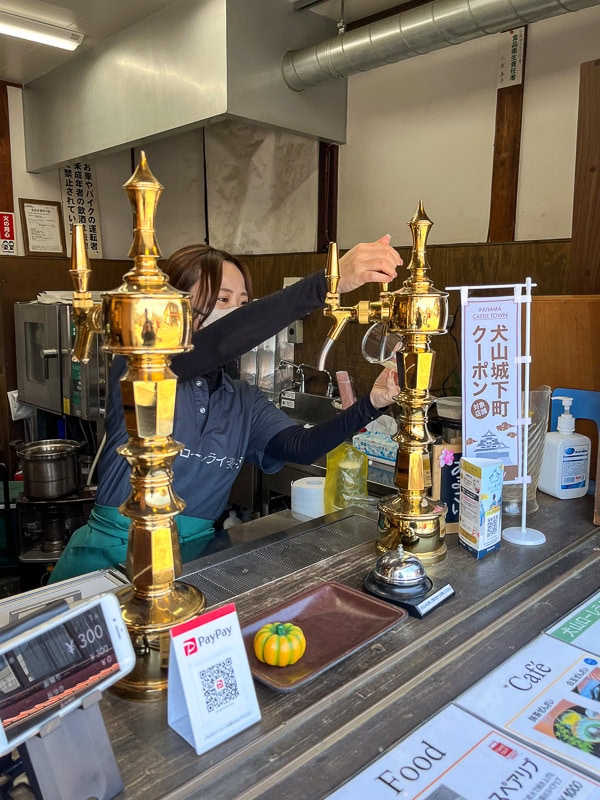
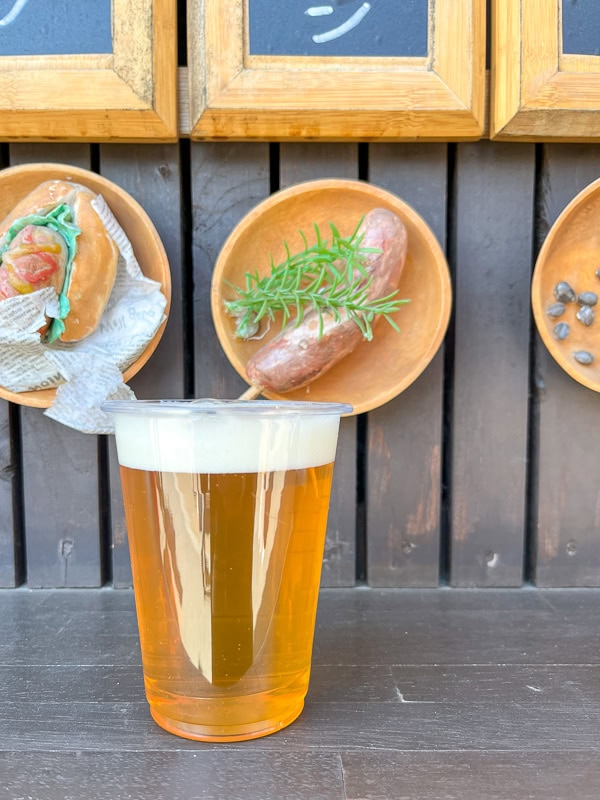
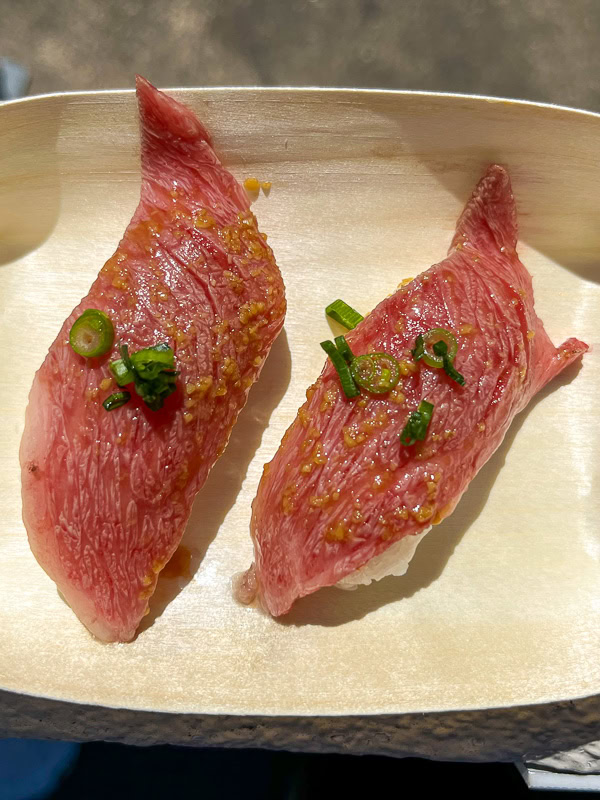
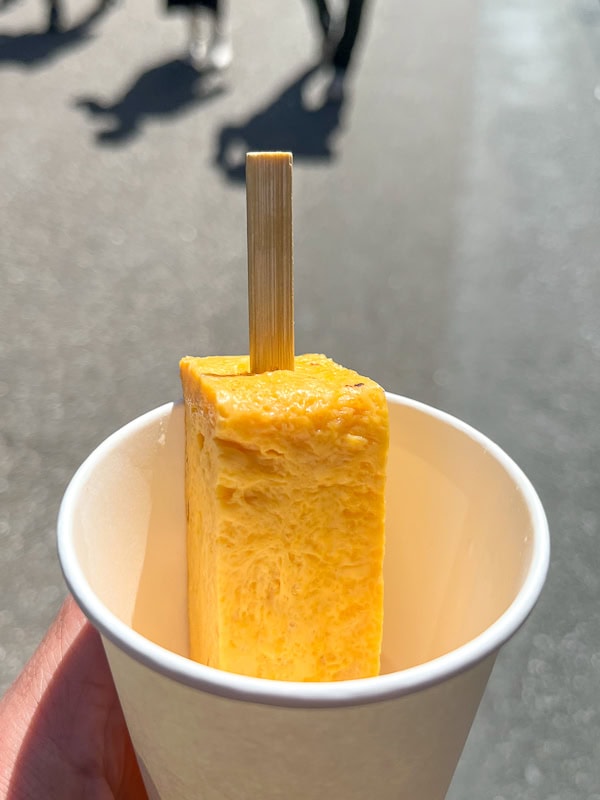
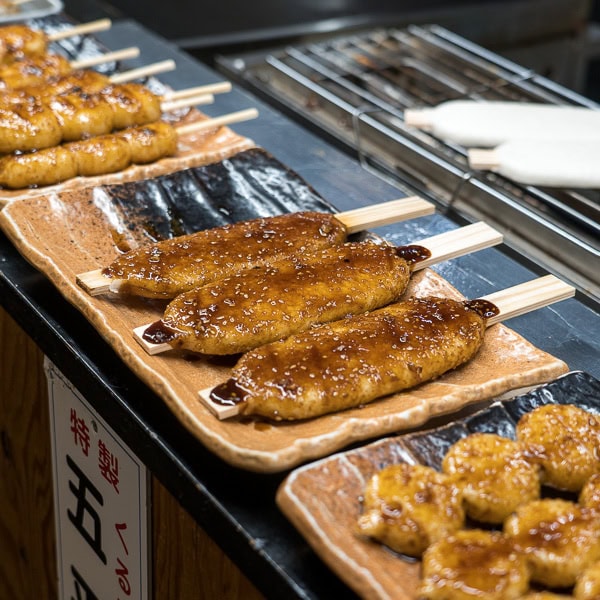
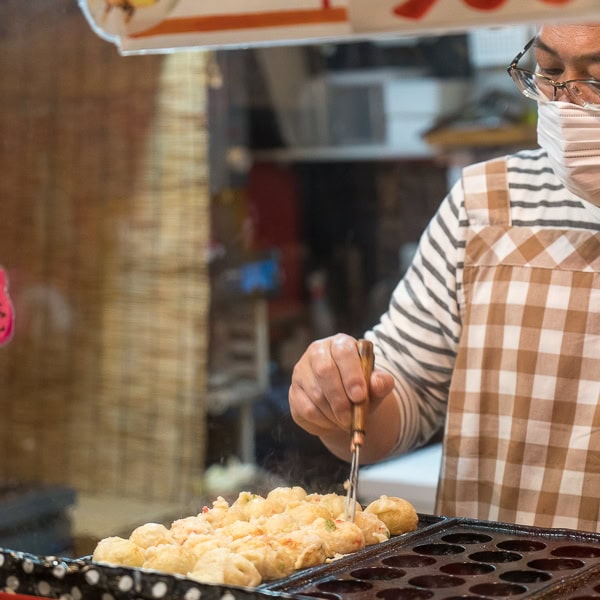
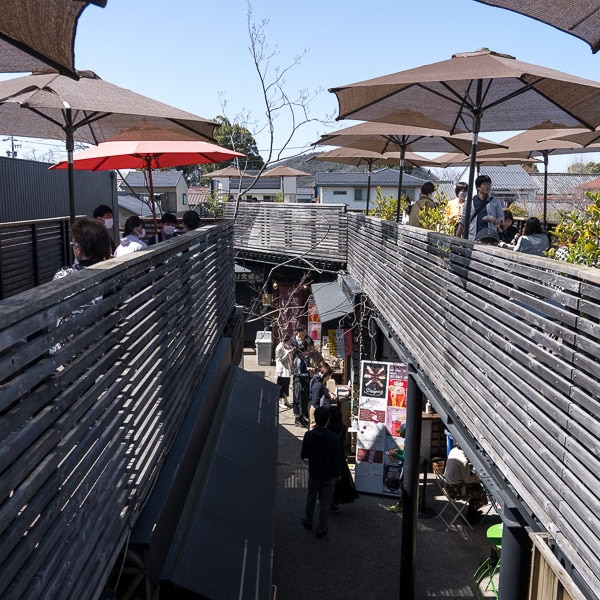
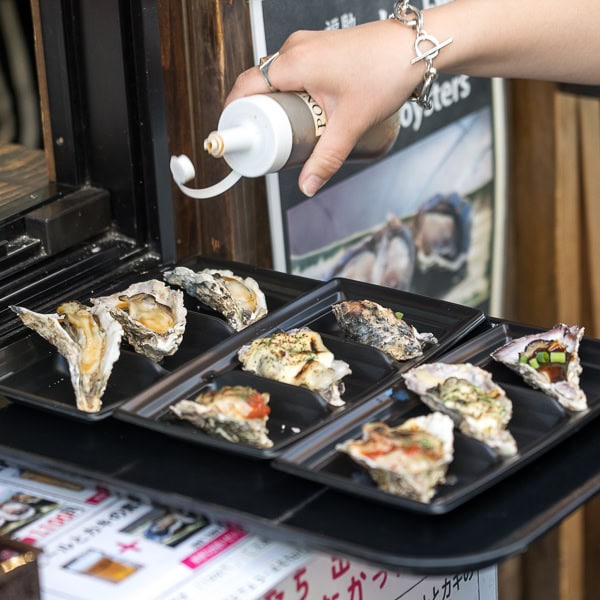
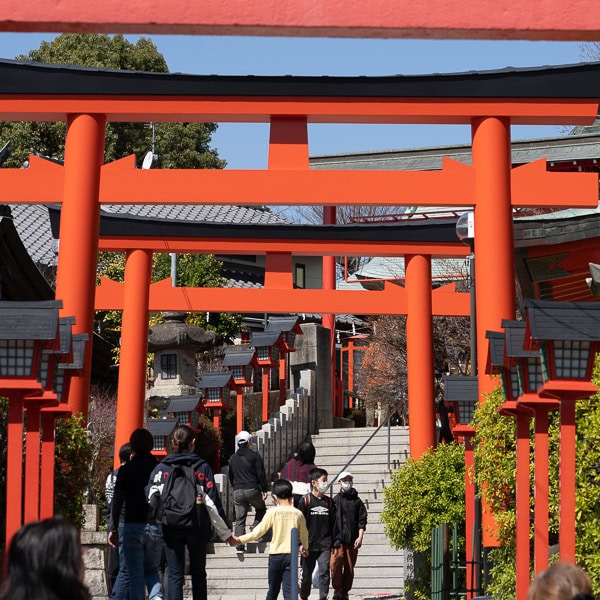
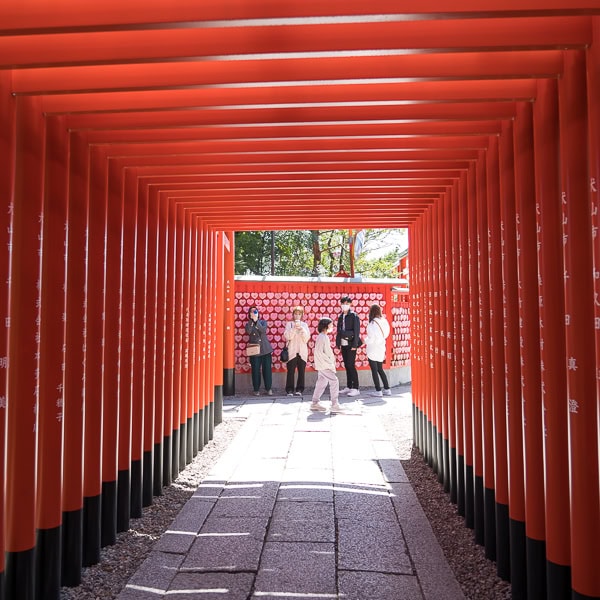

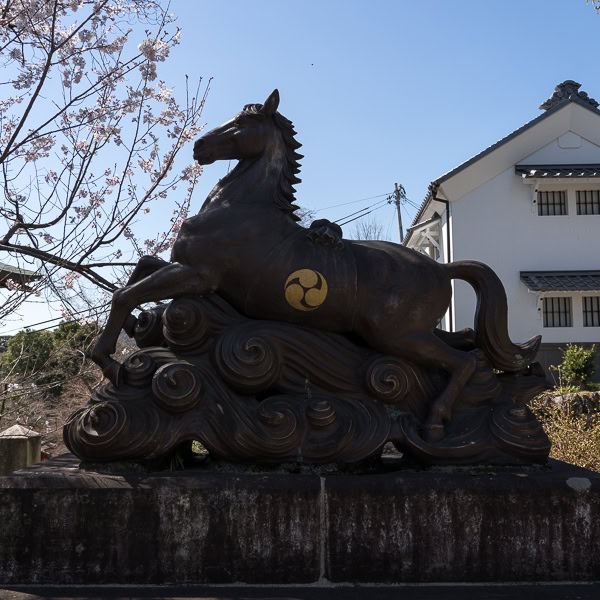
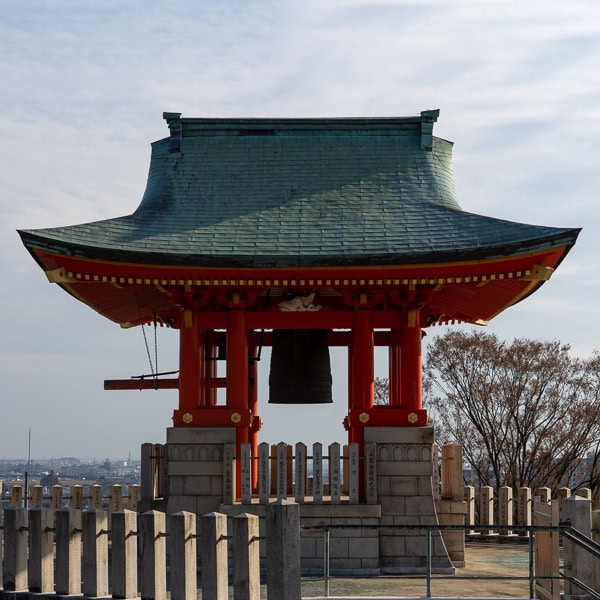
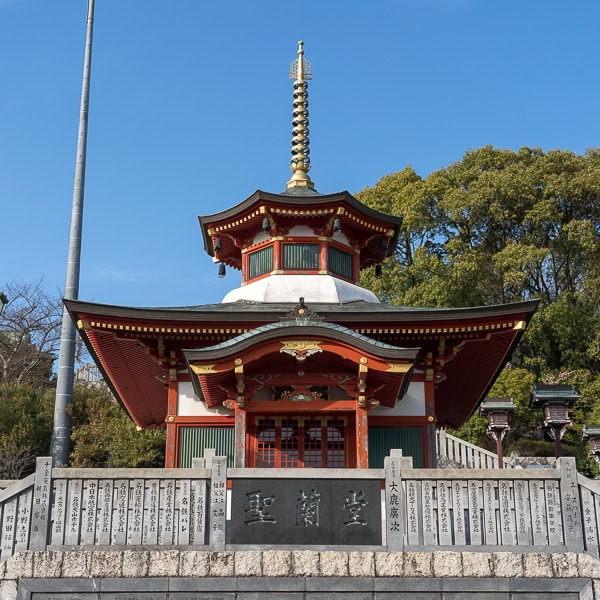
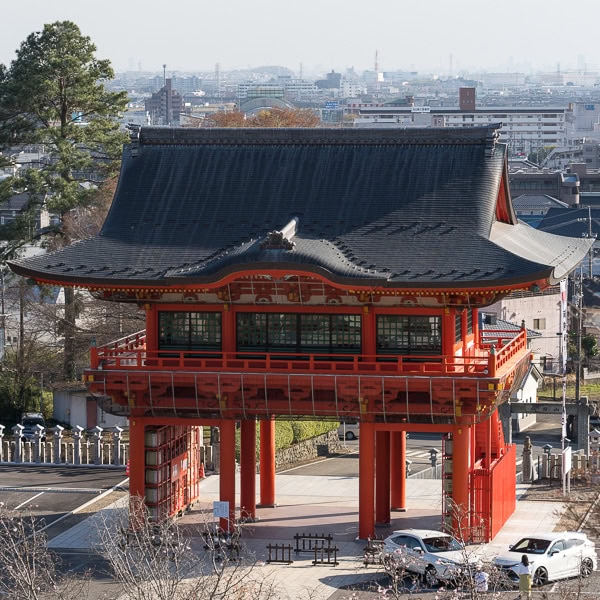
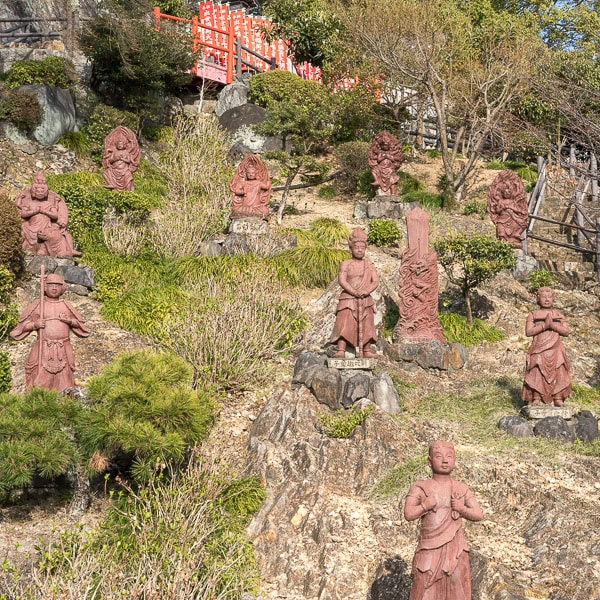
Related Posts